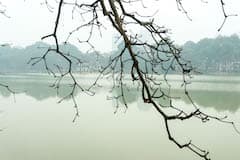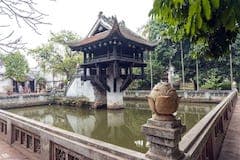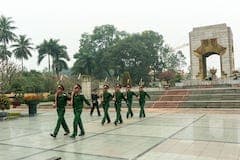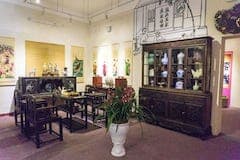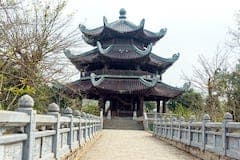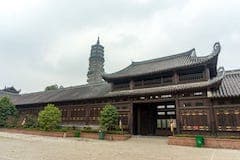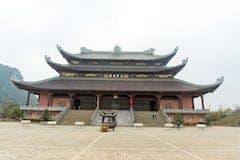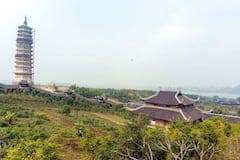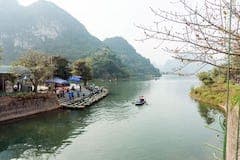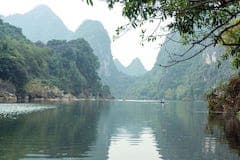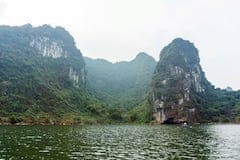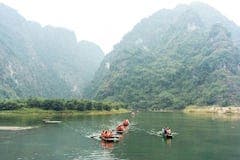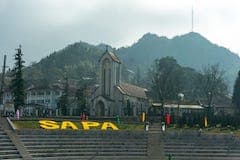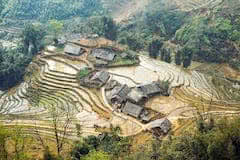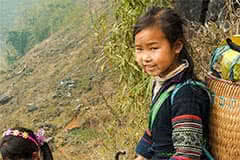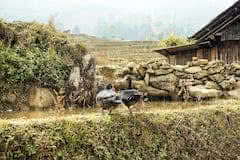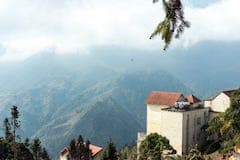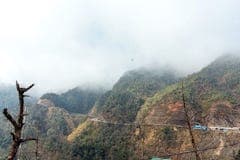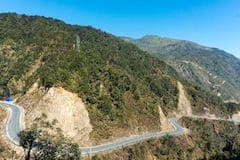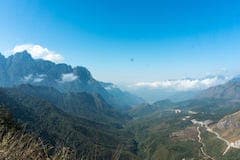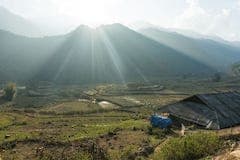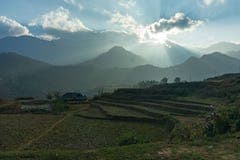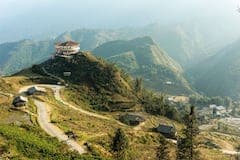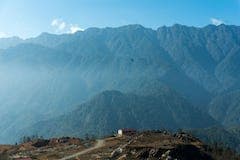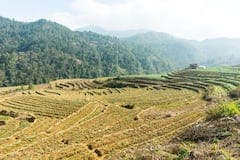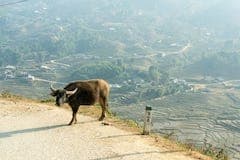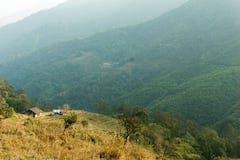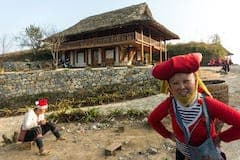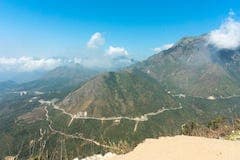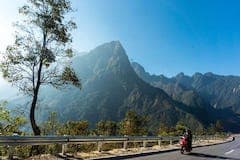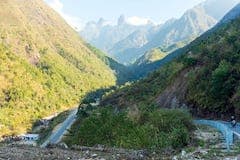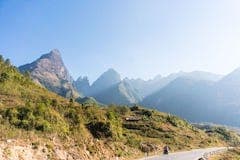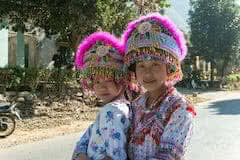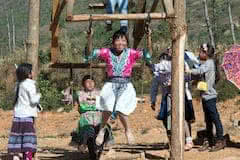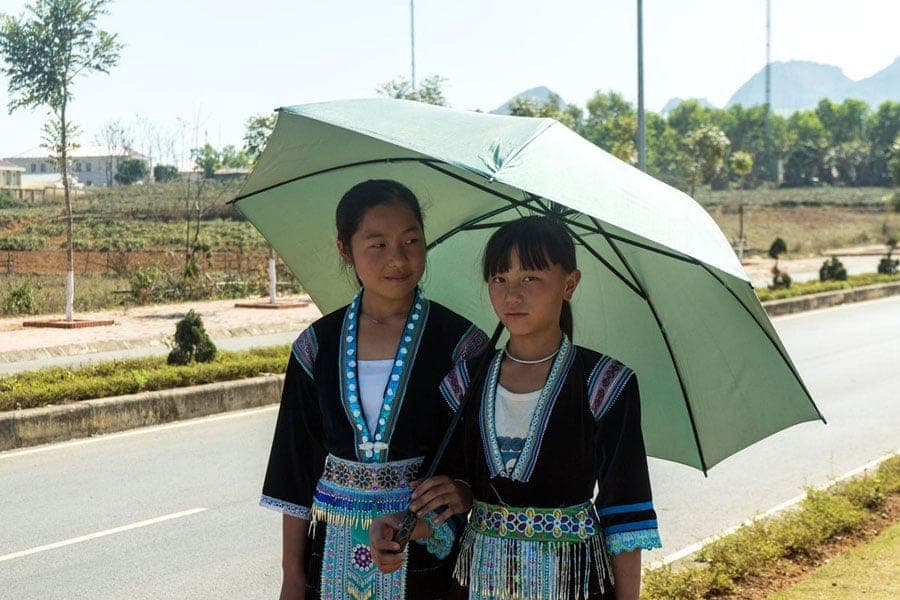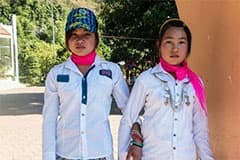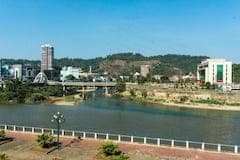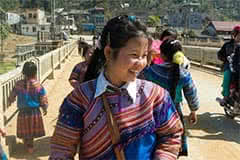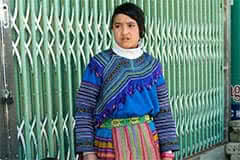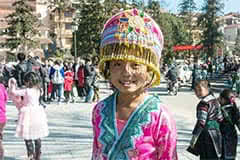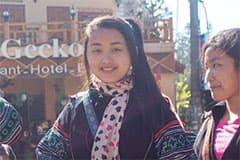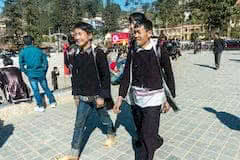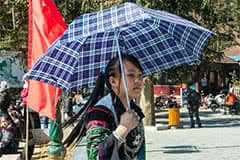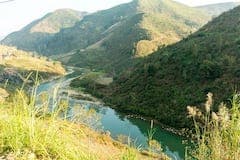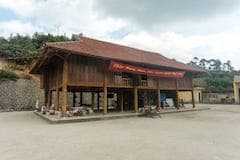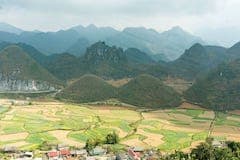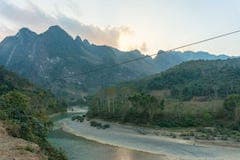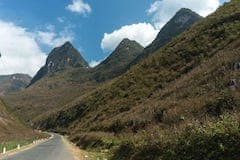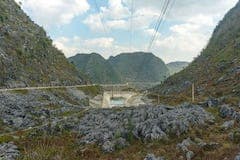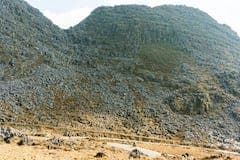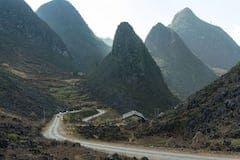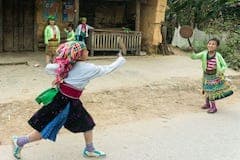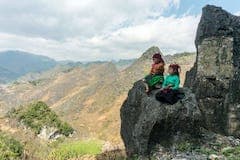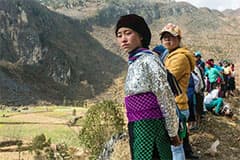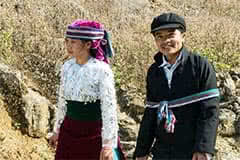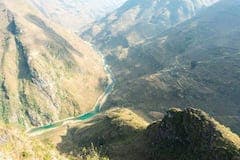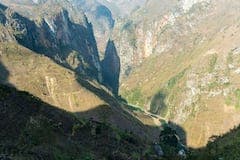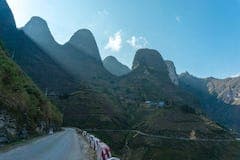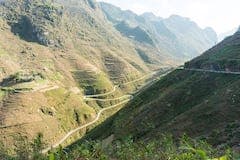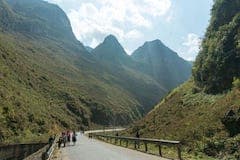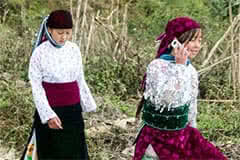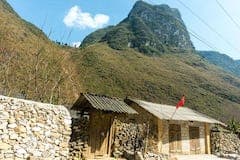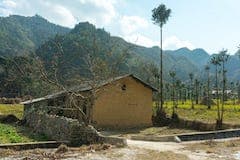Người về miền xuôi, đem theo tình người miền núi,
Nhà sàn lả lơi, đứng bên đường hoang vắng soi.
Đưa chân anh qua đồi, cơm lam đem theo người,
Lên cao anh ôm trời, để dòng suối lẻ loi…
Người về miền xuôi - Phạm Duy ►
 hi chép linh tinh trên đường thiên lý ra đất Bắc…
hi chép linh tinh trên đường thiên lý ra đất Bắc… Ai về Bắc, ta đi với; Thăm lại non sông giống Lạc Hồng…
Đôi khi phải hơi điên điên một chút, phải có cái nhìn bóp méo thực tế (reality distortion field) một chút, cười khinh khỉnh vào cái thực trạng xã hội bullshit bây giờ, để tâm quan sát, tìm kiếm… thì mới nhìn ra những điều tốt đẹp xưa cũ, mới nhận ra đâu là cái chất Việt thuần hậu!
HÀ NỘI
Cái logo di sản văn hoá phi vật thể của Unesco có thể được thấy trang hoàng khắp mọi nơi ở Hà Nội, cái hình tròn có lỗ vuông ở giữa, nhìn giống đồng tiền xu cổ, hình như phản ánh đúng thực tế Hà Nội bây giờ: vật giá ngày càng đắt và con người ngày càng rẻ!
BÁI ĐÍNH
Quy mô rất hoành tráng (dù điều đó chẳng có gì khó với kỹ thuật xây dựng hiện đại), nhưng đường lối kiến trúc đúng chất Việt, từ lầu chuông gác trống cho đến đường nét các mái, kèo, xà, cột… không tạp nham, lai căn, vớ vẩn kiểu Đại Nam, Suối Tiên…
TRÀNG AN
Sơn thuỷ hữu tình, thật là nơi quyến rũ lòng người! Nước suối trong vắt, cá chép vàng choé lượn lờ dưới đáy rêu, các loài thuỷ cầm tự nhiên: cốc, vịt… bơi lội tự do! Sẽ có một ngày ta mang chiếc xuồng ra đây chèo đi chơi bằng hết các ngõ ngách sông ngòi và hang động!
SAPA
Ở Hà Nội, người ta bắt chuyện với mình bằng tiếng Anh, còn ở đây, người ta nhận ra ngay người Việt. Xứ sở của lạnh giá và sương mù, phong cảnh thiên nhiên tuyệt đẹp! Con người ta sống giản đơn, và cũng học đòi những thói xấu hiện đại… theo cách đơn giản!
Vốn không sợ độ cao, nhưng thỉnh thoảng vẫn cảm thấy ngợp trước núi đồi trùng điệp nơi đây. Sapa mùa này, phải thật kiên nhẫn mới chụp được một khung hình đẹp, ánh mặt trời rạng rỡ chỉ hiện ra vào một vài thời khắc hiếm hoi trong ngày, khi màn sương mù lạnh giá tạm vơi bớt.
Đa số chúng ta (kể cả tôi) tới đây với mong muốn có được những khung hình đẹp, nhưng phải chăng đó là tất cả mục đích của hành trình? Suy rộng ra, cái câu hỏi: chúng ta tới đây để làm gì?
ấy, nếu ai đó còn có trong đầu một câu trả lời, tức là còn… chưa trả lời được vậy! 😀
Những cung đường Tây Bắc không dành cho người yếu tim, chỉ một giây lơ là mãi ngắm nhìn cảnh quang xinh đẹp là đã có thể lạc tay lái xuống vực. Khác với thời tiết 3°C mấy ngày đầu lên đây, những ngày sau ấm hơn và có nắng, hôm nào máy ảnh cũng hết sạch pin rồi mới trở về!
LAI CHÂU
Đèo Ô Quý Hồ, dài và hiểm trở, cắt ngang qua dãy Hoàng Liên Sơn, đổ từ độ cao 2000 m xuống 1000 m, đúng nghĩa là dốc thăm thẳm. Một bên là đỉnh Phan Xi Păng, bên kia là huyện Tam Đường, Lai Châu. Bên này đèo thời tiết ấm và khô, bên kia, phía Sapa, lạnh và ẩm.
Cả một vùng Tam Đường, Phong Thổ, Sìn Hồ, t.p Lai Châu tương đối ít núi cao, khí hậu ấm hơn, đất đai cũng rộng rãi hơn, con người cũng có phần cởi mở, thân thiện hơn. Hôm nay cũng là ngày Tết của họ. Tiếc là đã đến Sìn Hồ mà không đủ thời gian để đến Pú Đao…
BẮC HÀ
Đi chợ phiên Bắc Hà đầu năm (cách Sapa hơn 100km), tình cờ ghé qua đây, ngồi bên ngã ba sông Hồng và sông Nậm Thi, cầu Cốc Lếu, bên kia sông là Hà Khẩu, Trung Quốc. Và cũng thật tình cờ, mùa này tháng 2, chính xác là ngày 17 tháng 2, đúng 35 năm trước…
Phiên chợ đầu năm chưa đông, nhưng đã rực rỡ sắc mầu, riêng người Mông đã có 5 sắc khác nhau (đen, hoa, xanh…), người Dao có đến 23 nhóm nhỏ (đỏ, đen, xanh, trắng…), lại còn Thái, Tày, Nùng, Dự, Giáy… Học cách phân biệt các sắc mầu cơ bản cũng đã hết cả một buổi.
Khá nhiều địa danh vùng Đông Bắc, Tây Bắc Việt Nam có nguồn gốc từ tiếng Hoa, chính xác hơn là phát âm theo tiếng Quan Thoại giọng vùng Vân Nam, Trung Quốc. Ghi lại ở đây một số từ phổ biến:
tả, 大, đại, lớn: Tả Van; séo, 小, tiểu, nhỏ: Séo Tung Hồ; lao, 老, lão, già, cũ: Lao Chải; sìn, 新, tân, trẻ, mới: Sìn Hồ; phìn, 坪, bình, bằng: Tả Phìn; thàng, 塘, đường, ao, đê: Lùng Thàng; chải, 寨, trại, trang trại: Mù Cang Chải; cai, 街, nhai, ngã tư: Si Ma Cai; hồ, 河, hà, sông: Ô Quý Hồ; chéng, 江, giang, sông: Sín Chéng; cấu, 沟, câu, suối: Cán Cấu; san, 山, sơn, núi: Phìn San; sàng, 上, thượng, bên trên: Sàng Chải; sả, 下, hạ, bên dưới: Sả Séng; tung, 中, trung, ở giữa: Tung Chải; tra, 家, gia, nhà: Má Tra; sa, 沙, sa, cát: Sa Pa; sử, 石, thạch, đá: Mù Sử; lủ, 路, lộ, đường: Ma Lủ; ma, 馬, mã, ngựa: Ma Sa Phìn; lùng, 龍, long, rồng: Lùng Phìn; giàng, 羊, dương, con dê: Giàng Phìn; nàn, 南, nam – phía nam: Nàn Sán
HÀ GIANG
Đã Hà (河) lại còn Giang (江), nơi đây có rất nhiều suối, sông nhỏ chảy dọc theo thung lũng, bản làng cũng nương theo đó hình thành. Những ngôi nhà sàn của người Tày dài thậm thượt, ruộng nương xanh tốt. Hà Giang là vùng đất mà tôi thích nhất trong số những vùng đã đi qua!
Cao nguyên đá Đồng Văn, như bị lạc vào một ma trận, một sa mạc đá. Đá mọi nơi, nhìn hoa cả mắt, thi thoảng mới thấy chút xíu đất có thể trồng trọt. Gió lạnh căm căm thổi suốt ngày đêm, một cái lạnh khô khốc, các làng xã đều xây hồ treo lớn chứa nước phòng khi hạn hán.
Cuộc sống nơi đây cực kỳ khắc nghiệt, thế nhưng khác hẳn với cái nhếch nhác vùng Sapa, cư dân nơi đây có vẻ chỉnh tề, quy củ, kỷ luật, từ y phục cho đến sinh hoạt, sản xuất, vui chơi. Cảm thấy được nghị lực và sức sống vươn lên từ vùng sa mạc đá này!
Tp. Hà Giang, Quản Bạ, Yên Minh, Đồng Văn, Mèo Vạc, về lại Hà Giang, một vòng 300 km. Làm 2 vòng như thế theo 2 chiều ngược nhau để không bỏ sót điều gì… nhất là Mã Pí Lèng hùng vĩ nhất VN, con đèo mà nhiếp ảnh nghiệp dư như tôi không thể nào lột tả hết được.
Không quên ghé qua Sủng Là, nơi quay phim Chuyện của Pao. Bây giờ đúng vào mùa hoa tam giác mạch tim tím và hoa cải vàng ươm nở rộ trên cao nguyên hun hút gió. Đến để biết rằng một không gian như thế, những con người như thế… là điều hoàn toàn có thật!
Kể chuyện đi ăn cháo ấu tẩu tại Hà Giang. Ấu tàu là loại củ kịch độc, dùng làm thức ăn phải qua chế biến kỹ càng. Bữa đầu tiên, bát cháo có mỗi lát ấu tẩu bằng cái móng tay. Ngồi nói chuyện trên trời dưới đất với vợ chồng chủ quán, phong thái người Bắc xưa, chẳng có gì giống Bắc bây giờ, đã thấy là một chuyện lạ (nghĩ bụng là dạng Kinh già hoá Thổ, người xuôi lên mạn ngược lập nghiệp lâu đời, giữ nguyên giọng nói, phong cách xưa cũ). Đến bữa thứ hai, ngoài vài lát ấu tẩu, còn được thêm cái móng heo, thêm một chút lạ. Đến bữa thứ ba, thấy chuyện lạ nhất: được một tô toàn ấu tẩu, ăn đến phát ngán! 😀
 ay after day, I gradually… felt in love with my new kayak 😀. Although quite sturdily and heavily built (around 32 kg), it behaves well on water. The longer and thiner hull offers much better speed (compared to Hello World – 1), but the most important thing is that the hull shape provides and maintains sufficient “kinetic energy” for the boat to make sustainable headway into unfavorable winds and waves!
ay after day, I gradually… felt in love with my new kayak 😀. Although quite sturdily and heavily built (around 32 kg), it behaves well on water. The longer and thiner hull offers much better speed (compared to Hello World – 1), but the most important thing is that the hull shape provides and maintains sufficient “kinetic energy” for the boat to make sustainable headway into unfavorable winds and waves!



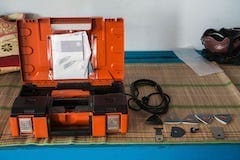
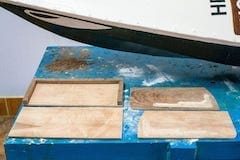
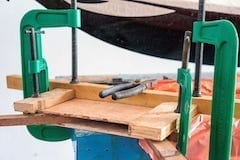
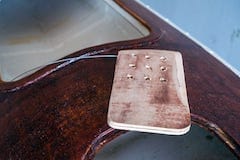
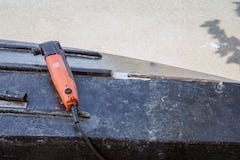
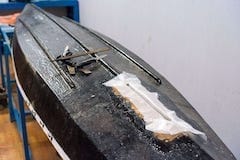
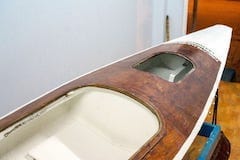
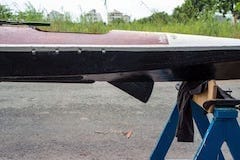
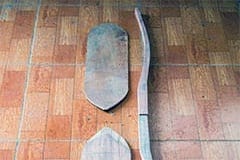
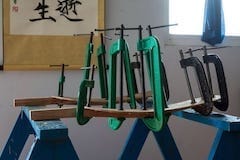
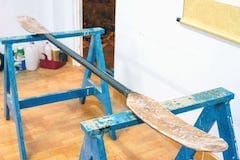
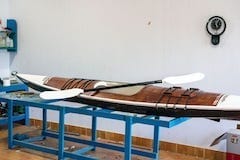
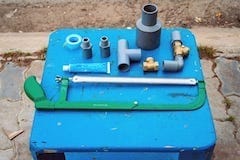
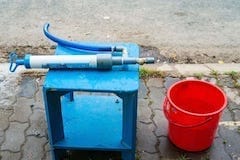
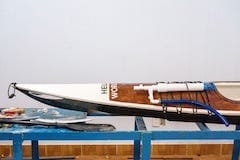
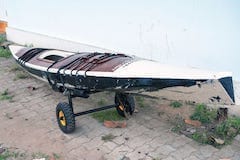
 he famous rubber duck is here on Crescent lake, Saigon. Just my curiosity to go there and have some poses with that huge, yellow floating object. To be precise, my childhood was not familiar to this kind of thing, such a toy at my time was consider to be… “luxurious”! The guards did not permit us to pass the floating buoy line, arghh!
he famous rubber duck is here on Crescent lake, Saigon. Just my curiosity to go there and have some poses with that huge, yellow floating object. To be precise, my childhood was not familiar to this kind of thing, such a toy at my time was consider to be… “luxurious”! The guards did not permit us to pass the floating buoy line, arghh!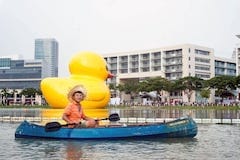
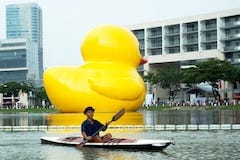
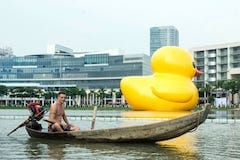
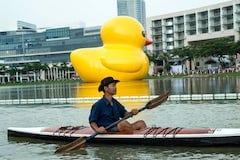
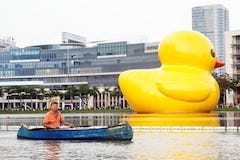
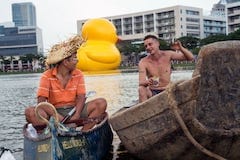
 t is not always as calm as in the video below, this time of the year, the monsoon is reversing, causing lots of turbulences. Sometimes waves are so big that I can hardly have anytime for playing around with
t is not always as calm as in the video below, this time of the year, the monsoon is reversing, causing lots of turbulences. Sometimes waves are so big that I can hardly have anytime for playing around with  ow “operating two boats” 😀, I could have more ways to play and have fun with them. Usually, me and one of my friend, each of us would go on a separate canoe / kayak, then exchange them at the midpoint of a paddling trip. It’s extremely hot out there this season, 35° ~ 39° Celsius, but that’s good for our endurence anyhow.
ow “operating two boats” 😀, I could have more ways to play and have fun with them. Usually, me and one of my friend, each of us would go on a separate canoe / kayak, then exchange them at the midpoint of a paddling trip. It’s extremely hot out there this season, 35° ~ 39° Celsius, but that’s good for our endurence anyhow.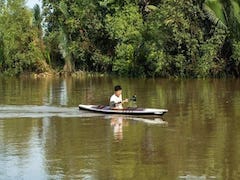
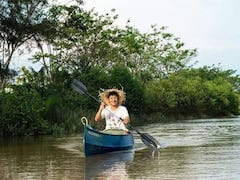
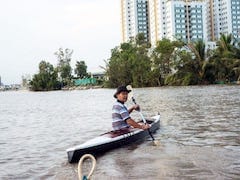
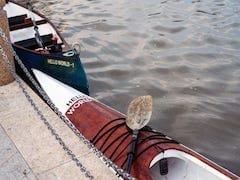
 aunched and trialled the kayak this April fool day! Can’t say how much I’m pleased with it, great speed, just like a dart slicing through water! 😀 It could take some time to learn how to handle this new kayak, the experiences are different between my two boats, but I got the right feeling on how to control it very soon.
aunched and trialled the kayak this April fool day! Can’t say how much I’m pleased with it, great speed, just like a dart slicing through water! 😀 It could take some time to learn how to handle this new kayak, the experiences are different between my two boats, but I got the right feeling on how to control it very soon.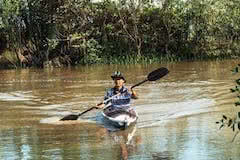
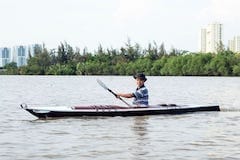

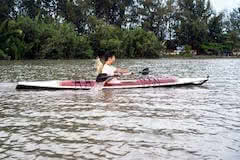
 rom the outlook, she gonna be a nice boat with simple and sporty curves! I proceed slowly and carefully, as I intend to use this boat for white – water (near coastal) areas, where it gonna be rougher and wavier, compared to the almost – calm rivers around Saigon. It need to be ‘engineered’ with a focus on durable & strength! 😀
rom the outlook, she gonna be a nice boat with simple and sporty curves! I proceed slowly and carefully, as I intend to use this boat for white – water (near coastal) areas, where it gonna be rougher and wavier, compared to the almost – calm rivers around Saigon. It need to be ‘engineered’ with a focus on durable & strength! 😀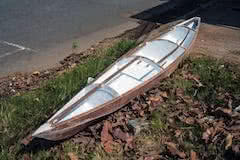
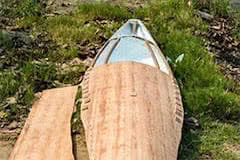
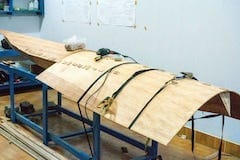
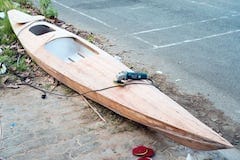
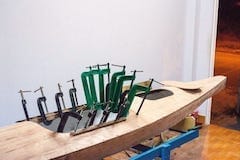
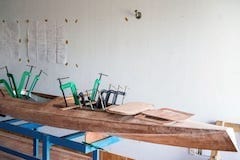
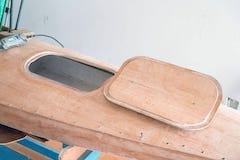
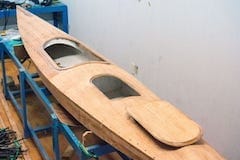
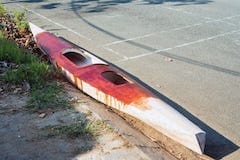
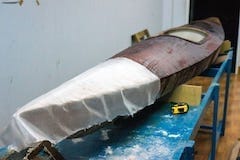
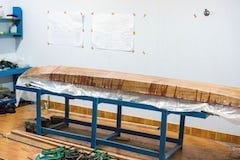
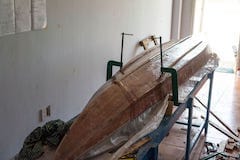
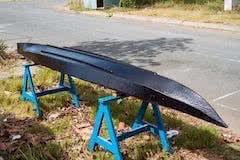
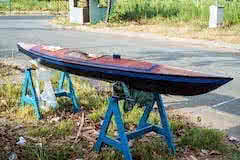
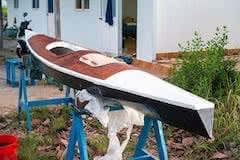
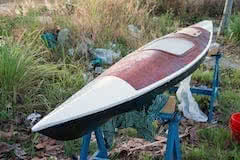
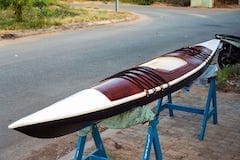
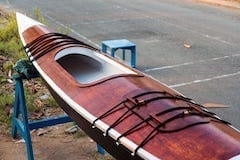
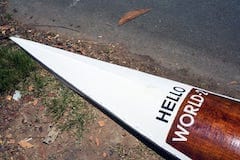
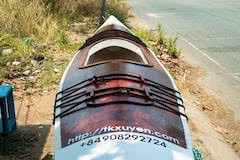
 ix months have passed since I’d started Hello World – 1, my first build, a general purpose canoe. Now it’s time to let this planned Hello World – 2 to say Hello to the world 😀. She gonna be a kayak (of Selway Fisher’s Dart 14′ design), which I hope to have better performance and somewhat better ‘open – water’ capabilities.
ix months have passed since I’d started Hello World – 1, my first build, a general purpose canoe. Now it’s time to let this planned Hello World – 2 to say Hello to the world 😀. She gonna be a kayak (of Selway Fisher’s Dart 14′ design), which I hope to have better performance and somewhat better ‘open – water’ capabilities.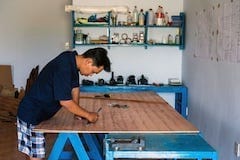
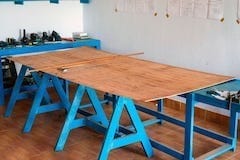
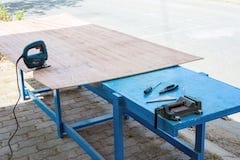
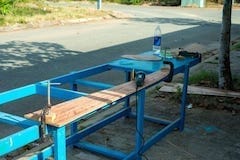
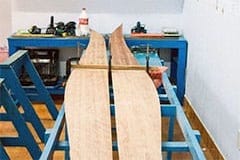
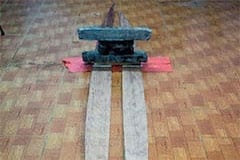
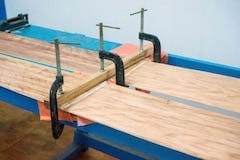
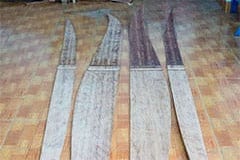
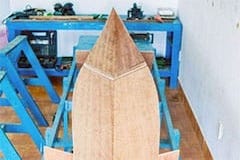
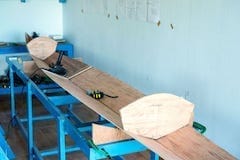
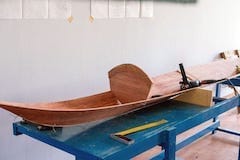
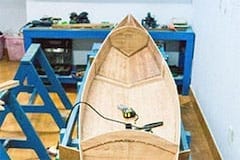
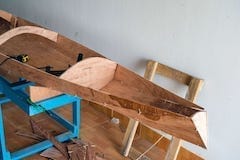
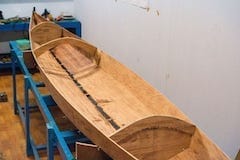
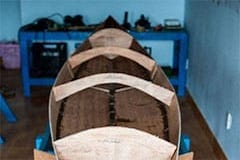
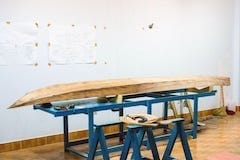
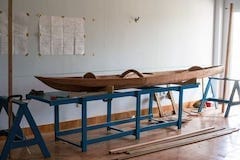
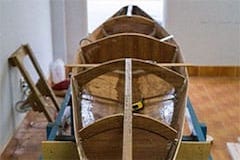
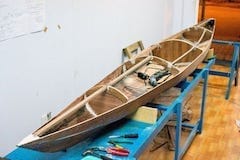
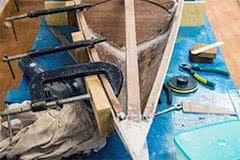
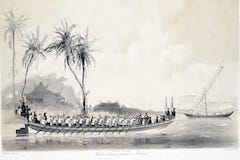
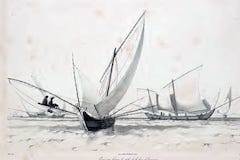
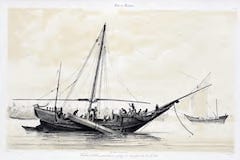
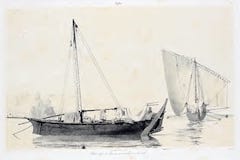
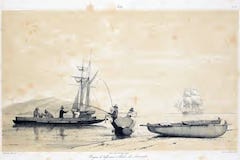
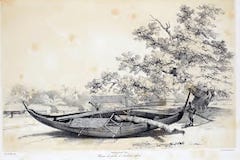
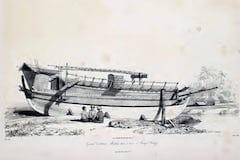
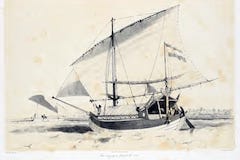
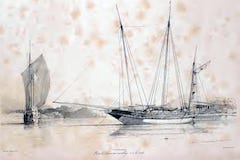
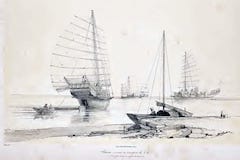
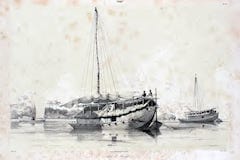
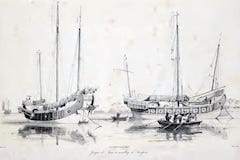
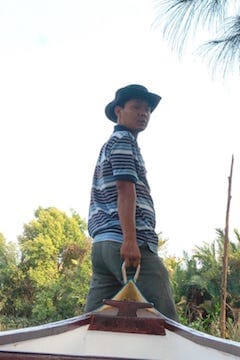
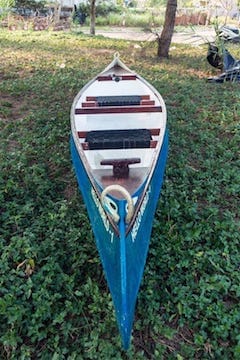
 hi chép linh tinh trên đường thiên lý ra đất Bắc…
hi chép linh tinh trên đường thiên lý ra đất Bắc… 